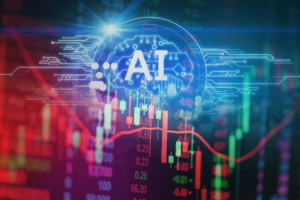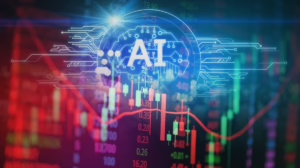Breaking Down Machine Learning: How Algorithms Are Shaping Our World
Machine learning (ML) has become a trending topic in the tech and business landscapes, often heralded as a revolutionary force that is reshaping industries, enhancing decision-making, and driving innovations. As we delve into the multifaceted world of machine learning, this article aims to break down its core components, applications, and implications, allowing us to grasp how algorithms are influencing our everyday lives.
What is Machine Learning?
At its core, machine learning is a subset of artificial intelligence (AI) that enables systems to learn from data, identify patterns, and make decisions with minimal human intervention. Unlike traditional programming, where explicit instructions dictate an application’s behavior, machine learning algorithms improve their performance as they process more data. This shift in capabilities allows machines to adapt and respond to new inputs—essentially learning in a way similar to human cognitive functions.
Types of Machine Learning
Machine learning can be categorized into three main types:
-
Supervised Learning: This type involves training a model on a labeled dataset, where the correct output is provided. The algorithm learns to map inputs to the correct outputs, making it effective for tasks like classification and regression.
Example: Predicting house prices based on features like location, size, and number of bedrooms.
-
Unsupervised Learning: Here, the model is provided with data that lacks labels. The algorithm attempts to uncover hidden patterns or groupings within the data.
Example: Customer segmentation based on purchasing behavior without pre-existing labels.
-
Reinforcement Learning: In this category, an agent learns to make decisions by taking actions in an environment to maximize cumulative rewards. This approach is widely used in robotics, gaming, and resource management.
Example: A robot navigating a maze learns from trial and error to find the most efficient route.
Machine Learning Algorithms
Several algorithms form the backbone of machine learning, each suited for specific tasks and types of data. Some prominent algorithms include:
-
Linear Regression: Used for predicting a continuous outcome variable based on the linear relationships between input features.
-
Decision Trees: A model that uses a tree-like structure to make decisions based on feature values, suitable for both classification and regression tasks.
-
Support Vector Machines (SVM): A powerful classification algorithm that finds the optimal hyperplane to separate different classes.
-
Neural Networks: Designed to simulate the human brain, these models consist of interconnected nodes and are particularly effective in handling large datasets. They are the foundation of deep learning, a more advanced subset of machine learning.
-
K-Means Clustering: An unsupervised learning algorithm used to group data into distinct clusters based on similarity.
Each of these algorithms has strengths and weaknesses, and the choice of a particular model often depends on the specific problem being addressed, the nature of the data, and the desired outcome.
Applications of Machine Learning
Machine learning is revolutionizing numerous sectors, including healthcare, finance, retail, and technology. Here are some significant applications:
Healthcare
Machine learning algorithms have made significant strides in healthcare, aiding in early diagnosis, personalized treatment plans, and drug discovery.
-
Diagnostic Tools: Algorithms can analyze medical images such as X-rays and MRIs, helping radiologists detect anomalies like tumors or fractures more accurately.
-
Predictive Analytics: By analyzing electronic health records, machine learning can predict patient outcomes, readmission rates, and potential side effects of treatments, enabling healthcare providers to make informed decisions and improve patient care.
Finance
In the finance sector, machine learning algorithms enhance risk assessment, fraud detection, and algorithmic trading.
-
Risk Management: Financial institutions leverage machine learning models to assess the creditworthiness of applicants, predicting their likelihood of default based on historical data.
-
Fraud Detection: Transaction monitoring systems utilize machine learning to identify suspicious activities in real-time, drastically reducing losses from fraudulent transactions.
Retail
Machine learning is transforming retail through personalization, inventory management, and pricing strategies.
-
Recommendation Systems: E-commerce platforms like Amazon and Netflix employ machine learning algorithms to analyze user behavior and recommend products or content based on interests and previous purchases.
-
Dynamic Pricing: Retailers can adjust prices in real time based on demand, competitor pricing, and inventory levels, optimizing sales and profits.
Transportation
In the realm of transportation, machine learning plays a crucial role in logistics, autonomous vehicles, and traffic management.
-
Route Optimization: Logistic companies use machine learning algorithms to find the most efficient routes for delivery, considering factors like traffic, weather, and road conditions.
-
Autonomous Vehicles: Self-driving cars rely on a combination of sensor data and machine learning algorithms to navigate and make quick decisions in complex environments safely.
Education
Machine learning enhances personalized learning experiences and administrative tasks within the education sector.
-
Adaptive Learning: Algorithms can analyze students’ learning styles and performance, delivering tailored educational content that matches their unique needs.
-
Administrative Efficiency: Educational institutions streamline admissions, grading, and resource allocation through machine learning, reducing operational costs.
The Ethical Implications of Machine Learning
As with any technological advancement, the rising prominence of machine learning brings various ethical considerations and challenges that must be addressed to ensure responsible usage.
Bias and Fairness
One of the most pressing ethical issues in machine learning is algorithmic bias. If the data used to train an algorithm reflects societal biases, the model may perpetuate or even exacerbate these biases in its predictions and decisions. For instance, biased hiring algorithms can disadvantage certain demographics, leading to systemic discrimination.
Mitigation Strategies
To combat bias, researchers and practitioners must ensure diversity in training data and apply measures to audit and validate models for fairness. Techniques such as fairness-aware machine learning are being explored to mitigate discriminatory outcomes.
Transparency and Accountability
Many machine learning models, particularly deep learning neural networks, operate as “black boxes,” making it challenging to understand their decision-making processes. This lack of transparency can lead to accountability issues, especially in high-stakes domains like healthcare and criminal justice.
Explainable AI
The field of explainable AI (XAI) is emerging to address these concerns, aiming to provide insights into how models make decisions. Techniques like feature importance analysis and visualization tools help elucidate the workings of complex algorithms, fostering trust among stakeholders.
Data Privacy
With machine learning models often requiring vast amounts of personal data, data privacy becomes a significant concern. The collection, storage, and processing of sensitive information pose risks of breaches and misuse.
Regulatory Compliance
Compliance with regulations such as the General Data Protection Regulation (GDPR) and the California Consumer Privacy Act (CCPA) is critical. Organizations need to implement security measures and obtain explicit consent from users for data collection, ensuring ethical practices in machine learning deployments.
The Future of Machine Learning
As we move forward, the capabilities and applications of machine learning continue to evolve, and several trends are shaping its future.
Increased Automation
Machine learning is poised to further automate tasks across various industries, reducing human intervention in repetitive processes. This trend will free up human resources for more complex and creative tasks.
Integration with Other Technologies
The integration of machine learning with other technologies—such as the Internet of Things (IoT), blockchain, and augmented reality—will lead to innovative solutions and services. For example, smart cities will leverage machine learning to optimize energy consumption and traffic flow based on real-time data from connected devices.
Democratization of AI
Efforts to democratize access to machine learning tools and resources are gaining momentum. Platforms providing user-friendly interfaces and pre-trained models enable individuals and organizations, regardless of technical expertise, to harness the potential of machine learning.
Growth of Edge Computing
The proliferation of edge computing complements machine learning by enabling data processing closer to the data source, such as IoT devices. This reduces latency and enhances the speed of decision-making, making real-time applications more feasible.
Ethical AI Development
As awareness of ethical concerns grows, organizations are prioritizing responsible AI development practices. Stakeholders are advocating for ethical guidelines and frameworks that ensure the responsible deployment of machine learning technology.
Conclusion
Machine learning is undeniably a transformative force, shaping our world in profound ways. From enhancing healthcare outcomes to revolutionizing transportation and finance, its applications are vast and varied. With continuous advancements and increasing integration into our daily lives, understanding the implications of this technology is more crucial than ever.
As we embrace the potential benefits of machine learning, it is equally important to acknowledge and address the ethical challenges it presents. By prioritizing transparency, fairness, and data privacy, we can pave the way for responsible AI that serves the greater good, ensuring that machine learning not only shapes our world but does so ethically and inclusively.
Footnotes
- “What is Machine Learning?” IBM, IBM.com.
- “Types of Machine Learning.” Towards Data Science, TowardsDataScience.com.
- “Applications of Machine Learning.” McKinsey & Company, McKinsey.com.
- “Addressing Algorithmic Bias in AI.” Harvard Business Review, HBR.org.
- “Explainable AI: Understanding Machine Learning Model Decisions.” Google AI, ai.google.


























Add Comment